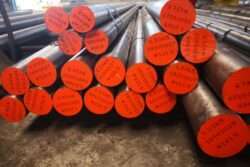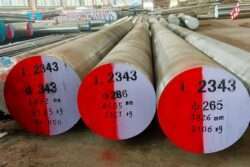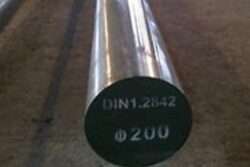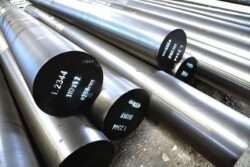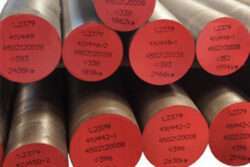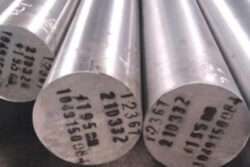Introduction
In the demanding world of high-temperature applications, the choice of materials is critical to ensure durability, performance, and safety. One such material that has gained popularity in various industries is H11 tool steel. Known for its exceptional toughness, heat resistance, and wear resistance, H11 tool steel is an ideal choice for manufacturing tools that must withstand extreme conditions. This comprehensive guide will explore why H11 tool steel is the preferred material for high-temperature tools, discussing its properties, applications, and advantages over other tool steels.
Understanding H11 Tool Steel
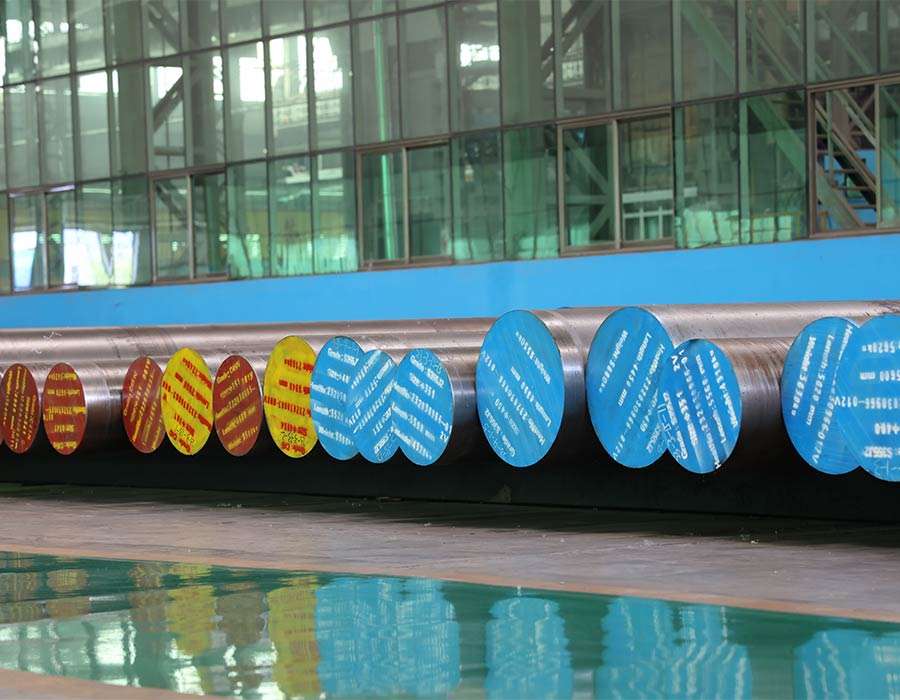
What is H11 Tool Steel?
H11 tool steel is a chromium-based steel alloy that belongs to the H-series of hot-work tool steels. It is known for its excellent combination of toughness, strength, and resistance to thermal fatigue, making it suitable for applications where tools are subjected to high temperatures and mechanical stress. The composition of H11 tool steel includes elements like chromium, molybdenum, and vanadium, which contribute to its superior properties.
Chemical Composition of H11 Tool Steel
The chemical composition of H11 tool steel is a key factor in its performance. The following table provides an overview of the key elements in H11 tool steel and their respective percentages:
| Element | Percentage (%) |
|---|---|
| Chromium (Cr) | 4.75 – 5.50 |
| Molybdenum (Mo) | 1.10 – 1.60 |
| Vanadium (V) | 0.30 – 0.60 |
| Carbon (C) | 0.32 – 0.45 |
| Silicon (Si) | 0.80 – 1.20 |
| Manganese (Mn) | 0.20 – 0.50 |
| Phosphorus (P) | 0.030 max |
| Sulfur (S) | 0.030 max |
This balanced composition gives H11 tool steel its unique properties, such as resistance to high temperatures, thermal fatigue, and wear, making it a top choice for hot-working applications.
Properties of H11 Tool Steel
Heat Resistance and Thermal Stability
One of the most significant properties of H11 tool steel is its exceptional heat resistance. H11 can maintain its strength and hardness even at elevated temperatures, making it ideal for tools that are exposed to intense heat during operations. This property ensures that tools made from H11 tool steel can perform reliably without losing their integrity or becoming deformed.
Toughness and Impact Resistance
H11 tool steel is renowned for its toughness, which is the ability to absorb energy without fracturing. This toughness is crucial in applications where tools are subjected to sudden impacts or high mechanical stresses. The combination of toughness and heat resistance makes H11 tool steel an excellent choice for forging dies, extrusion tools, and other high-temperature applications.
Wear Resistance and Durability
In addition to its heat resistance and toughness, H11 tool steel also offers excellent wear resistance. This means that tools made from H11 can withstand abrasion and erosion, leading to longer service life and reduced maintenance costs. This durability is particularly important in industries where downtime for tool replacement can be costly.
Applications of H11 Tool Steel
Hot Forging Dies
Hot forging is a process where metal is shaped under high pressure and temperatures. The dies used in this process must withstand repeated heating and cooling cycles, as well as the mechanical stresses involved in shaping metal. H11 tool steel’s heat resistance and toughness make it an ideal material for hot forging dies, ensuring consistent performance and longevity.
Extrusion Tools
Extrusion is another process that involves pushing or drawing metal through a die to create a specific shape. The high temperatures and pressures involved in extrusion can quickly wear down ordinary tools. However, H11 tool steel’s wear resistance and thermal stability make it perfect for extrusion tools, providing reliable performance and extended tool life.
Die Casting Molds
Die casting involves injecting molten metal into a mold to form intricate shapes. The molds used in die casting are exposed to extreme temperatures and require materials that can withstand thermal fatigue and wear. H11 tool steel is commonly used for die casting molds due to its ability to maintain structural integrity and resist cracking under thermal stress.
Plastic Molding Tools
In the plastic molding industry, tools are often subjected to high temperatures during the injection process. H11 tool steel’s heat resistance and durability make it an excellent choice for molds used in plastic injection molding, ensuring precise and consistent production of plastic parts.
Comparing H11 Tool Steel with Other Tool Steels
H11 vs. H13 Tool Steel
H13 tool steel is another popular choice for high-temperature applications, and it’s often compared to H11. While both H11 and H13 offer excellent heat resistance and toughness, there are some differences:
- Heat Resistance: H13 tool steel has slightly better heat resistance compared to H11, making it more suitable for applications involving continuous exposure to extreme temperatures.
- Toughness: H11 tool steel offers better toughness than H13, making it more resistant to cracking under impact or mechanical stress.
- Wear Resistance: Both steels provide good wear resistance, but H11 is often preferred for applications where impact resistance is more critical.
H11 vs. D2 Tool Steel
D2 tool steel is known for its high wear resistance and is commonly used for cutting tools and dies. However, it has lower toughness and heat resistance compared to H11:
- Wear Resistance: D2 tool steel offers superior wear resistance, making it ideal for applications where abrasion is the primary concern.
- Heat Resistance: H11 tool steel has better heat resistance than D2, making it more suitable for high-temperature applications.
- Toughness: H11 is tougher than D2, providing better performance in applications involving impact or thermal fatigue.
H11 vs. A2 Tool Steel
A2 tool steel is an air-hardening steel known for its good wear resistance and toughness. Here’s how it compares to H11:
- Heat Resistance: H11 tool steel outperforms A2 in heat resistance, making it more suitable for high-temperature tools.
- Toughness: While A2 offers good toughness, H11 is generally tougher, making it a better choice for tools exposed to high mechanical stress.
- Wear Resistance: A2 tool steel provides good wear resistance, but H11’s combination of toughness and heat resistance makes it more versatile for hot-working applications.
Table: Comparison of Tool Steels
The following table provides a comparison of H11 tool steel with other commonly used tool steels, highlighting their key properties and applications:
| Tool Steel | Heat Resistance | Toughness | Wear Resistance | Common Applications |
|---|---|---|---|---|
| H11 | Excellent | Excellent | Very Good | Hot forging dies, extrusion tools, die casting molds |
| H13 | Superior | Very Good | Very Good | Die casting, extrusion dies, hot forging |
| D2 | Moderate | Fair | Superior | Cutting tools, stamping dies, molds |
| A2 | Good | Good | Good | Punches, dies, forming tools |
Advantages of H11 Tool Steel at High Temperatures

Longer Tool Life
One of the primary advantages of using H11 tool steel is the extended tool life it offers. The combination of heat resistance, toughness, and wear resistance ensures that tools made from H11 can withstand the harsh conditions of high-temperature applications, reducing the frequency of tool replacement and associated downtime.
Enhanced Performance
Tools made from H11 tool steel deliver consistent performance, even under extreme conditions. Whether in hot forging, die casting, or extrusion, H11 tools maintain their structural integrity, ensuring precise and reliable results throughout their service life.
Cost-Effectiveness
While H11 tool steel may have a higher initial cost compared to other materials, its durability and reduced maintenance needs make it a cost-effective choice in the long run. The reduced frequency of tool replacement and the reliability of H11 tools lead to significant savings in production costs over time.
Versatility
H11 tool steel is versatile and can be used in a wide range of high-temperature applications. Its balanced properties make it suitable for various industries, including automotive, aerospace, and manufacturing, where performance and reliability are paramount.
Conclusion
H11 tool steel is an exceptional material for high-temperature tools, offering a combination of heat resistance, toughness, and wear resistance that is hard to match. Its suitability for applications such as hot forging dies, extrusion tools, and die casting molds makes it a top choice for industries that demand durability and performance. By choosing H11 tool steel, manufacturers can ensure longer tool life, enhanced performance, and cost-effectiveness in their operations.
FAQ
What is H11 tool steel used for?
H11 tool steel is commonly used for high-temperature applications, including hot forging dies, extrusion tools, and die casting molds.
Why is tool steel H11 preferred for high-temperature tools?
H11 tool steel is preferred for high-temperature tools due to its exceptional heat resistance, toughness, and wear resistance.
How does H11 tool steel compare to H13 tool steel?
H11 tool steel offers better toughness, while H13 tool steel has slightly superior heat resistance, making both suitable for different high-temperature applications.
What are the key properties of tool steel H11?
The key properties of tool steel H11 include excellent heat resistance, high toughness, and very good wear resistance.
Can tool steel H11 be used in plastic molding tools?
Yes, tool steel H11 is suitable for plastic molding tools due to its durability and resistance to thermal fatigue.
How does the wear resistance of tool steel H11 benefit high-temperature applications?
The wear resistance of tool steel H11 ensures longer tool life and consistent performance in abrasive and high-stress environments.
What industries commonly use tool steel H11?
Industries such as automotive, aerospace, and manufacturing commonly use tool steel H11 for tools and components exposed to high temperatures.
Is tool steel H11 cost-effective for long-term use?
Yes, tool steel H11 is cost-effective for long-term use due to its durability, reduced maintenance needs, and extended tool life.
How does tool steel H11 perform in die casting molds?
Tool steel H11 performs exceptionally well in die casting molds, maintaining its structural integrity and resisting cracking under thermal stress.
What makes tool steel H11 a versatile choice for high-temperature tools?
The versatility of tool steel H11 comes from its balanced properties, making it suitable for a wide range of high-temperature applications across various industries.

